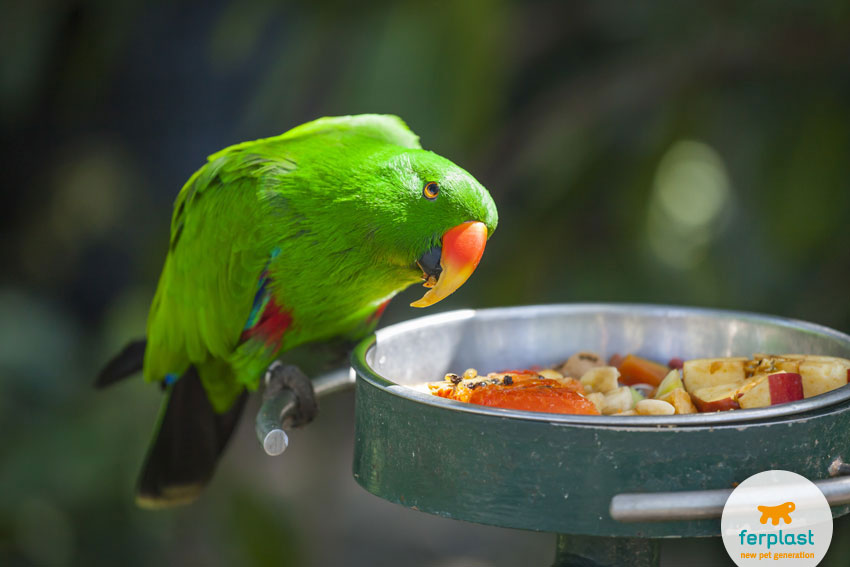In a previous article, we saw how a diet based on seeds is inadequate for a parrot and leads to deficiencies that can cause serious disorders and even early death. Instead, feeding your bird a healthy, balanced diet means using a variety of foods or good quality pellets. So what should you do if your parrot doesn’t want to eat?
Accustomed to a certain diet, your parrot, an animal of habit, will probably not really agree to any change in his food. However much the change might benefit his health, don’t be surprised that your feathered friend is undoubtedly more eager to carry on eating his tasty seeds. Also, if he isn’t used to the new food, he might not even realize that it’s edible at first. So, overcoming his initial wariness might prove to be a little tricky…
Before you begin to change his diet, it is important to know that the sudden disappearance of his usual food would cause our parrot a great deal of stress and not only will he be reluctant to eat, but he will probably completely refuse to touch the food you are offering him. Therefore, switching to a new diet must be done gradually, to avoid any danger of malnutrition for your animal. Here are a few suggestions.
- Don’t give up. If your bird doesn’t accept or doesn’t recognize the food on the first day, that doesn’t mean that he doesn’t like it or that he won’t eat it in the future. For this reason, you must not give up and discard the idea straight away, but continue to put it in the feeding trough until he begins to enjoy it. Of course, if the food is perishable, don’t leave it there until it goes bad… Remember: if at first you don’t succeed, try and try again!
- Reduce the seeds. Obviously, in order to switch to the new diet, the amount of the previous food needs to be reduced, otherwise your bird will continue to eat the same things that he has always eaten. Try to gradually reduce the quantity of seeds, replacing them with little pieces of the new food. Driven by hunger, your animal might taste and accept the new food.
- Pay attention to the time. Parrots eat mainly in the morning and early evening, so you could make the new food available to him at these times, adding the seeds at the times when your bird eats less, for example from evening until morning.
- Combine old and new. If your parrot is greedy for his seeds, you can mix them with new foods, such as pieces of fruit and vegetables: in order to get to the seeds he loves so much, the bird will also swallow the new entry, thereby getting used to the new taste and understanding that it is edible.
- Stimulating curiosity. Parrots are curious and intelligent animals and they often want to taste their master’s food. If you munch on a carrot in front of your bird, he might decide that he wants to taste it too.
- Make it fun. In this case, playing with food is literally a good thing. In fact, parrots love to play and love bright colours. For example, by using special “skewers” that you can hang inside the cage, you can make colourful compositions made of fruit and vegetables, which will entice your bird to play, by biting the pieces, until he understands that they are edible… and tasty too!
As well as these suggestions, remember that parrots like food to be lukewarm (if cooked) or at room temperature, so he won’t eat food that comes directly from the fridge. A healthy and varied diet is very important for our splendid feathered friend’s health. Therefore, with patience and willingness, you will see that he will gradually be persuaded to eat his fruit, veggies and other healthy foods!
![]()
![]()
![]()
![]()
![]()



